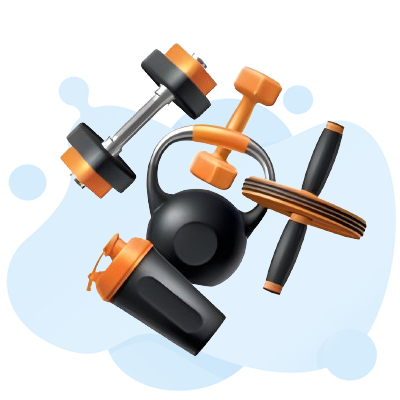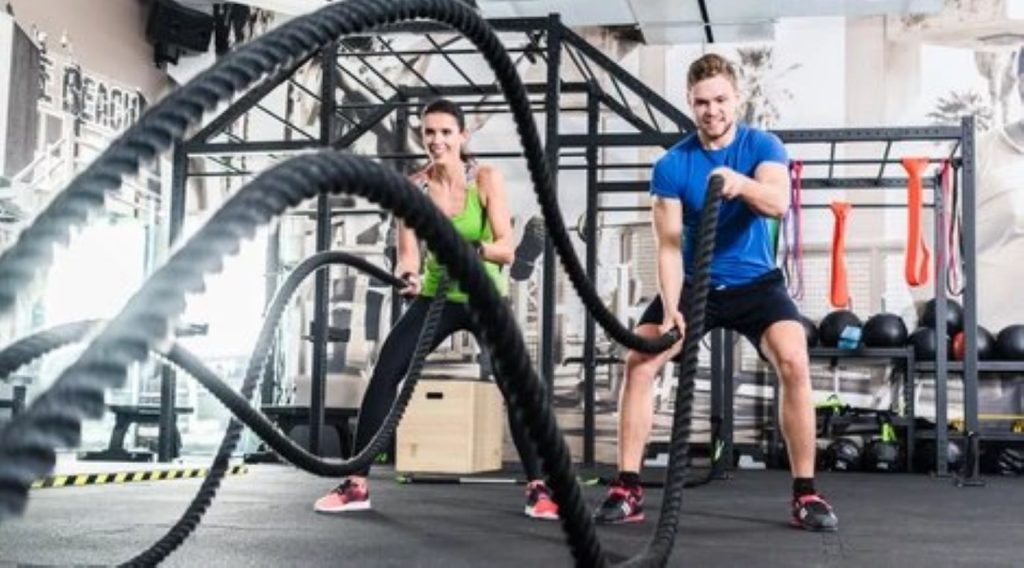Master the Candidate Physical Ability Test Now

Preparing for the Candidate Physical Ability Test (CPAT) is crucial if you want to succeed in your pursuit of a career in physical fitness assessment. It’s important to understand the CPAT requirements, scoring system, and the best methods for practice. In this section, we will provide you with expert tips and strategies to help you master the CPAT.
With the right CPAT preparation, you can confidently approach the test and increase your chances of success. Understanding how CPAT scoring works is essential as it gives you clarity on the specific areas you need to focus on during your training.
To ensure you are well-prepared for the CPAT, effective CPAT practice is necessary. By simulating the test conditions and focusing on improving your performance in each task, you can build the confidence and skills needed to excel in the exam.
Free CPAT Practice Test Online
Key Takeaways:
- CPAT preparation is essential for success in the exam.
- Understanding CPAT scoring helps you identify areas to focus on during training.
- Effective CPAT practice involves simulating test conditions.
- Improving performance in each CPAT task contributes to overall success.
- Mastering the CPAT requires dedication, practice, and strategic preparation.
Understanding CPAT Requirements and Exam Details
In order to successfully conquer the Candidate Physical Ability Test (CPAT), it’s crucial to have a comprehensive understanding of the specific requirements and exam details. By familiarizing yourself with the physical fitness standards, components of the CPAT, and time limits for each task, you can better prepare yourself for this demanding test. Let’s dive into the essential information you need to know.
Physical Fitness Standards
The CPAT is designed to evaluate your physical abilities and ensure that you possess the necessary strength and endurance to perform the duties of a firefighter. These physical fitness standards may vary slightly depending on the firefighting agency, but they generally assess your cardiovascular conditioning, muscular strength, and overall physical aptitude.
Components of the CPAT
The CPAT consists of several components that assess different aspects of your physical fitness. These components are designed to simulate real-life firefighting tasks and determine your ability to perform under challenging conditions. Here are the main elements of the CPAT:
- Stair Climb: This task evaluates your cardiovascular endurance and lower body strength as you ascend and descend a set of stairs while wearing a weighted vest.
- Hose Drag: This component assesses your upper body strength and dragging abilities as you pull and maneuver a charged hose.
- Equipment Carry: Here, you demonstrate your overall strength and ability to handle equipment by carrying various objects over a designated distance.
- Ladder Raise and Extension: This task evaluates your upper body strength and coordination as you raise and extend a ladder to a specific height.
- Forcible Entry: Here, you demonstrate your upper body power and technique by forcing open a door using a specific tool.
- Search: This component assesses your ability to navigate through a dark, smoke-filled maze and locate simulated victims.
- Rescue: In this task, you simulate dragging and carrying a life-sized dummy to assess your ability to handle and transport victims.
- Confined Space: Here, you crawl through a confined space with limited visibility, requiring agility, flexibility, and spatial awareness.
Time Limits for Each Task
Time management is crucial during the CPAT. Each task has a specific time limit, and it’s essential to complete them within the allocated timeframe. The time limits for each task may vary depending on the firefighting agency conducting the test, but they generally range between 1.5 to 5 minutes per task. It’s important to practice and improve your efficiency in order to meet these time constraints.
By gaining a thorough understanding of the CPAT requirements and exam details, you will be better prepared to tackle this physically demanding test. The next section will provide you with effective strategies for CPAT training and practice to further enhance your performance.

Effective Strategies for CPAT Training and Practice
When it comes to excelling in the Candidate Physical Ability Test (CPAT), strategic training and targeted practice are key. In this section, we will provide you with valuable tips and insights to help you optimize your CPAT preparation and performance. Whether you’re a beginner or looking to improve your existing training routine, these strategies will guide you towards success.
Key Areas to Focus On
Effective CPAT preparation involves targeting specific areas of physical fitness. By prioritizing these key areas, you can improve your overall performance in the test. Here are the essential elements to focus on during your training:
- Cardiovascular Endurance: Enhance your cardiovascular fitness through activities such as running, cycling, or swimming.
- Strength Training: Develop your muscular strength and endurance by incorporating weightlifting, bodyweight exercises, and resistance training into your routine.
- Flexibility and Mobility: Incorporate stretching exercises and mobility drills to improve your range of motion and joint flexibility.
Tips for Each CPAT Task
The CPAT consists of various tasks that evaluate your physical abilities in real-world scenarios. To excel in each task, consider the following tips:
Task 1: Stair Climb
Familiarize yourself with proper stair climbing technique, utilizing a steady and controlled pace. Strengthen your legs and lower body through exercises like lunges, squats, and step-ups. Practice stair climbing in different environments to simulate test conditions.
Task 2: Ladder Lift and Extension
Focus on upper body strength and grip by incorporating exercises like pull-ups, push-ups, and deadlifts into your training. Work on your coordination and technique for smooth ladder extension. Enhance your core stability to improve balance and control during the task.
Task 3: Equipment Carry
Train your body for carrying heavy loads by including exercises like farmer’s walks, suitcase carries, and loaded carries in your routine. Work on your grip strength and ensure proper lifting technique. Practice carrying different types of equipment and focus on maintaining balance and stability.
Task 4: Hose Drag
Enhance your upper body strength and endurance through exercises such as rows, bench presses, and bicep curls. Practice dragging hoses in various positions – standing, kneeling, and crawling – to simulate different scenarios. Focus on maintaining a consistent pulling motion and body positioning.
Task 5: Search
Improve your agility, coordination, and speed by incorporating exercises like agility ladder drills, cone drills, and shuttle runs into your training. Enhance your visual scanning skills to efficiently locate targets. Practice searching in different environments to adapt to various conditions.
Simulating Test Conditions for Realistic Practice
To ensure your CPAT practice is as realistic as possible, consider the following strategies:
- Time yourself during each task to adhere to the test’s time limits.
- Schedule your practice sessions at the same time of day as the actual test to align your body’s energy levels.
- Find a suitable training location that closely matches the test environment, including stairs, obstacles, and dedicated training facilities if available.
- Wear the same or similar attire to what you will wear on the test day to become comfortable with the clothing’s fit and movement limitations.
By implementing these effective strategies and tips into your CPAT training and practice, you will improve your performance, build confidence, and be well-prepared for success on test day.

Conclusion
In conclusion, the Candidate Physical Ability Test (CPAT) is a rigorous exam that requires thorough preparation and dedicated practice. By following the expert tips and strategies provided in this article, you can increase your chances of success in the CPAT. Remember, while the CPAT pass rate may vary, with the right preparation, you can confidently tackle the test and achieve your goals.
Start your CPAT training today and work towards mastering this important physical fitness assessment. The CPAT pass rate may not be the only factor determining your success, but it is important to note that the more prepared you are, the higher your chances of passing the test. Therefore, it is crucial to invest time and effort into understanding the CPAT requirements, practicing the test tasks regularly, and continually improving your physical fitness.
By consistently following a comprehensive CPAT training guide, you can build the necessary strength, endurance, and agility required to successfully complete the CPAT. Keep in mind that the CPAT pass rate is not something to be discouraged by, but rather a motivation to strive for excellence. With dedication, determination, and the right preparation, you have what it takes to achieve your CPAT goals and embark on a successful career in the field.
FAQ
What is the Candidate Physical Ability Test (CPAT)?
The Candidate Physical Ability Test (CPAT) is a standardized physical fitness assessment designed to evaluate a candidate’s ability to perform essential tasks required for success in firefighting. It measures the candidate’s strength, endurance, and overall physical fitness.
How important is CPAT preparation?
CPAT preparation is crucial for success in the test. It helps familiarize candidates with the test format, tasks, and time limits. Through proper preparation, candidates can improve their physical fitness and develop effective strategies to perform well in each CPAT task.
How is CPAT scoring determined?
CPAT scoring is based on the candidate’s performance in each task. Each task is assigned a specific score, and the total score is determined by adding up the scores from all tasks. The pass/fail outcome is determined by meeting the minimum scoring requirements set by the relevant fire department or organization.
How can I practice for the CPAT?
You can practice for the CPAT by following a structured training program that focuses on the specific tasks included in the test. This may include exercises targeting cardiovascular endurance, muscular strength, and agility. Additionally, it’s beneficial to simulate the test conditions as closely as possible during practice sessions.
Are there any specific tips for the CPAT exam?
Yes, here are some tips for the CPAT exam:
– Familiarize yourself with the CPAT tasks and time limits.
– Focus on improving your overall physical fitness through regular exercise.
– Practice the specific tasks included in the CPAT to build familiarity and confidence.
– Develop efficient techniques and strategies for each task to maximize your performance.
– Pay attention to your form and technique to avoid unnecessary energy expenditure.